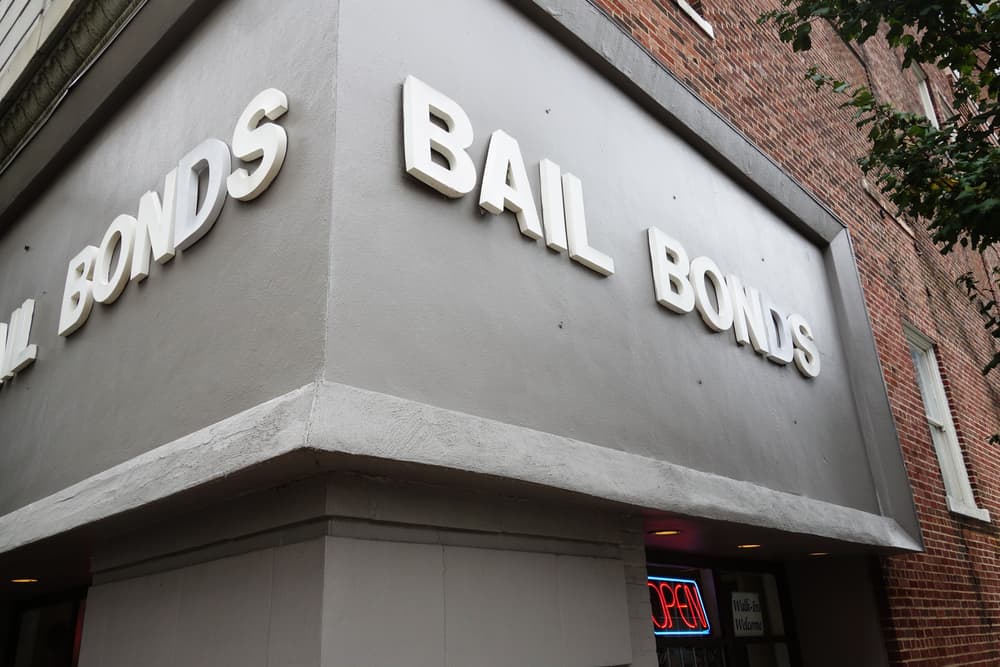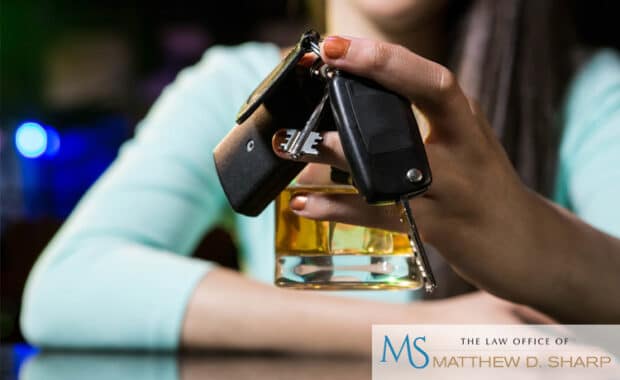If you enjoy legal dramas, you’ve probably watched this scene, or a variation of it, many times.
A defendant is standing with his or her attorney before the judge. The judge benevolently looks at the defendant and bangs the gavel. She shouts, “Bail is set at $500,000.”
The defendant is despondent. Because this is fiction, somehow the defendant is freed without paying any bail.
How did he come up with $500,000? How was the attorney able to convince the judge that the defendant isn’t a flight risk?
Bail is an important consideration if you’ve been arrested before or if this is a first offense. In this post, we discuss pretrial release and being freed on bail or your own recognizance.
What is Bail?
At the moment an individual is arrested, he or she wants to know how to avoid jail—now. Most defendants may post bail to accomplish this task.
Bail is a type of bond that releases the accused in exchange for funds held by the court until proceedings and trial dates involving the defendant are complete.
If the defendant shows up at the dates and times he or she is required, he is able to recover posted bail.
Bail is posted in cash, as a bond, or collateralized by property to defendant gives to the court to secure his or her appearance on the dates and times required.
If the accused doesn’t appear in court when required, the court keeps the bail and issues a warrant for the accused’s arrest.
If you’ve previously faced a criminal charge, you may know how bail bonds work. If you plead not guilty to the charges, your trial may be set well into the future. If the charges are serious, it may take years for the case to come to trial.
The judge’s decision to grant or deny bail isn’t the key factor in determining whether the defendant waits for trial in jail or if he or she is granted bail and freed until the trial.
If the judge remands the defendant, he or she must wait in jail until the trial.
If the judge grants bail to the defendant, Texas laws define bail as a “monetary payment” that’s intended to ensure that the accused appears for trial.
When the defendant is granted bail during the arraignment
The arraignment is the defendant’s appearance before the judge after an arrest. During the arraignment, the judge notifies the accused if he or she will be granted bail.
If the defendant wishes to post bail, but doesn’t have the financial wherewithal to post the amount required, his or her criminal defense lawyer can ask the judge to reduce it. The judge may agree to schedule a special bail hearing in that case.
In addition, the judge notifies the defendant of the charges he or she is facing.
Often, the severity of these charges guides the judge’s decision to grant or deny bail.
Although the amount of bail established by the judge is often final, there may be some instances when bail is adjusted. For instance, if new evidence is discovered, the judge could increase or decrease bail, or remand the defendant to jail to await trial.
When the defendant is released on his or her ‘own recognizance’
A judge may not find it necessary to establish bail to ensure the defendant’s appearance on his or her court dates.
For instance, the accused facing a misdemeanor offense may be released on his or her own recognizance (OR). Bail is waived.
Alternatively, the judge may trust the accused to show up as required. If the individual is a well-known member of the community, or he or she has a good job, parents, children, and a spouse living in the community, has lived here for a long time, has little/no prior criminal record (or his or her criminal problems occurred years before and were minor issues), or he or she has previously faced charges and appeared as required in the past, he or she may be released on OR.
If granted release on OR, the defendant signs an oath that promises the court he or she will appear on certain court dates.
How is Bail Set?
The court may use a mathematical formula called an algorithm to guide decisions regarding pretrial release. The algorithm considers elements like the defendant’s prior criminal history and age.
The Eight Amendment of the Constitution states that bail shouldn’t be “excessive.” In other words, bail shouldn’t be set to raise funds for the government. It shouldn’t be used as a punishment of the defendant facing criminal charges.
Bail’s primary purpose is to enable the defendant to stay out of jail until he or she is convicted of a criminal offense.
According to the U.S. Supreme Court in United States v. Salerno, 481 US 739 (1987), the decision to deny bail on the basis of the defendant’s perceived danger isn’t per se against Constitutional guidelines.
Judges may require high bail amounts in certain types of cases, with the understanding that high or unaffordable bail keeps the defendant in jail until the case is resolved.
Bail conditions
The defendant posting bail must agree to the court’s conditions of release. If the accused violates any condition, the judge may act to revoke his or her bail bond and return him or her to jail.
For example, most bail conditions include the requirement that the accused must obey all laws. It may include conditions reflecting the crime for which he or she has been arrested. For instance, if the defendant is facing a domestic violence charge, he or she is banned from reaching out to the alleged victim as a condition of bail.
How to Pay Bail
Bail may be paid in a variety of forms, including:
- Cash or cash equivalents, e.g. a check, for the total amount of the bail
- Pledged property, worth the total amount of bail (or worth more than the bail total)
- A bail bond that guarantees the total amount of the bail, secured through a bail bond firm
- A bail waiver of payment (provided on the condition that the accused agrees to appear in court as agreed on the required day and time (i.e., being released on his or her own recognizance)
Bail bondsmen charge a fee to arrange bail. Many bail bond firms charge 10 percent or more to post bail. In reality, a bail bond may cost the defendant more money in the long run:
- If the defendant posts cash bail, it will be returned (minus administrative fees) when the case is resolved and the defendant has made all necessary appearances.
- The bail bond firm’s fee is nonrefundable. Collateral may be required for the bail bond firm to underwrite the bail bond. This means the owner of the property (the defendant or his or her co-signer) pledges valuable property to ensure the defendant’s court appearances. If the defendant fails to appear, the bondsman may cash in its interest in the collateral.
- Failure to appear in court is referred to as jumping bail.
Contact The Law Office of Matthew D. Sharp about your case »
OR Release: “Getting out of Jail Free?”
Being released on one’s own recognizance is zero cost bail. The defendant granted OR release signs a written promise to return to court. He or she pays no bail to the court. There’s no need to engage a bail bond firm.
Importantly, some other aspects of bail are the same. The judge may place certain conditions on the OR release, e.g. the defendant must check in at certain intervals with an assigned probation officer and/or refrain from alcohol and drug use. If the defendant doesn’t adhere to the OR terms and conditions, the judge may revoke the OR release and re-arrest him or her.
Similarly, if the defendant fails to appear in court on the days and times required, he or she will face arrest.
Drug Rehabilitation as a Condition of OR Release
According to a recent national study, more than 65 percent of defendants use illicit drugs. Drug addiction fuels many arrests.
If an OR release is granted (or a supervised pretrial release program is available), the defendant’s conditional release may require his or her immediate participation in an inpatient/outpatient drug treatment program.
Pretrial Release Programs
County sheriffs may use discretionary powers to provide OR to certain defendants before their arraignments.
This decision involves a judgement call on the sheriff’s party. He or she must weigh the same elements as the court judge does, evaluating the defendant’s community ties, prior criminal record, severity of the crime, and public safety. If the sheriff decides to offer OR to the defendant, it provides its reasons in writing to the court.
Contact an Experienced Criminal Defense Attorney about Pretrial Release
If you or someone you love is trying to get out of jail, or you have questions about OR release or bail matters, contact an experienced Texas criminal defense lawyer who’s well-versed in the local system.
If you’re facing criminal charges, you should seek representation and advice from a criminal defense lawyer as well.
Contact The Law Office of Matthew D. Sharp in Houston now at 713-868-6100.






